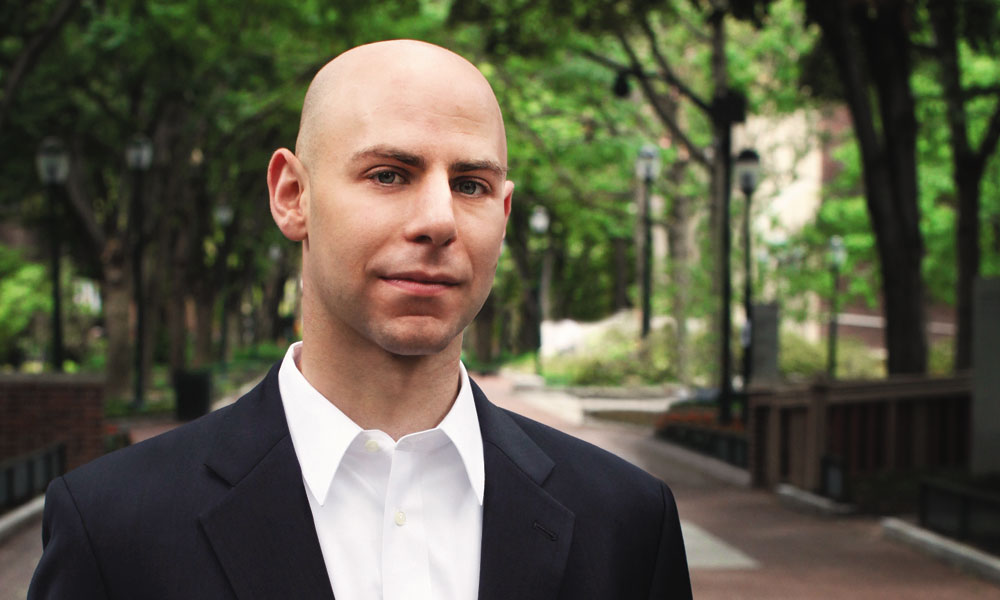
Adam Grant: The Giving Revolution
“Workplace giving” is no longer about philanthropy, according to social scientist Adam Grant. Rather, it’s about getting work done—your work, your organization’s work—and done well. Givers, it seems, are anything but doormats: They’re powerful drivers of business success.
Mission-oriented associations are uniquely positioned to pioneer widespread experimentation and adoption of giving cultures led by giving leaders.
“Workplace giving” is no longer about philanthropy, according to social scientist Adam Grant. Rather, it’s about getting work done—your work, your organization’s work—and done well. Givers, it seems, are anything but doormats: They’re powerful drivers of business success.
Maybe it’s the timing. When Give and Take was released last year, everyone from Fortune to Oprah pounced on the book’s premise about the power of “givers” in organizations and lauded it to the lofty realms of “best business book of 2013” and “most inspiring” reading.
Yes, its author, Adam Grant, is the youngest tenured professor at the University of Pennsylvania’s Wharton School of Business. Yes, he’s received loads of teaching and social science awards and ranks among the top 40 business teachers on the planet. And, yes, his fans include Malcolm Gladwell and Bill Clinton.
But the focus of his research—giving—is hardly flashy; some skeptics might even call it quaint. However, Grant’s deep dive into the topic shows it’s anything but old-fashioned. Indeed, its impact and potential for organizations has proven that giving can be downright revolutionary.
The guy is talking about the power and, provocatively, the dangers of giving—not the monetary kind but the supportive, collaborative, work-oriented kind. More specifically, he writes about givers as well as nongivers or partial tit-for-tat givers whom he labels “takers” and “matchers,” respectively.
Grant tackled the book to prove wrong his skeptical classes of next-gen executives who questioned whether giving—of time, talents, ideas, connections, expertise, resources, even some slack—occurs in organizations today, much less by their most successful leaders.
Their dubiousness is understandable. One study revealed that 22 percent of people perceive givers as weak and less likely to succeed. Respondents also said they burn out, earn less, and are “doormats.”
Grant found these statements were true—until they weren’t. Regardless of industry or profession, while givers often started off slow—having the weakest freshman grades or longest time to promotion, for instance—he discovered that eventually, many had leapfrogged to the top tiers and built a loyal fan base in the process.
“The biggest surprise for me was the initial discovery that givers are at the top and the bottom of most performance metrics,” he says. “I came into this seeing many givers succeed and a lot of evidence that, in the long run, people who give to others are better off, so the dark sides or costs were less obvious to me at first.
“Once that paradox unfolded, I realized [success] wasn’t just a matter of talent, confidence, or skill. … How thoughtful you are and the strategies you use to give do have a huge impact on whether you’re successful or not.”
On the “dark side,” Grant warns that “givers tend to burn out when they become selfless, when people put others so far ahead of themselves that they fail to [meet their obligations] before assisting others. That’s not sustainable.”
He found that the most effective givers are those he calls “otherish,” professionals who don’t keep score or expect anything back from people they’ve helped but who also realize they can’t help everyone at any time regarding anything.
Otherish givers are selective in three ways. They choose
- whom they help, being more generous with givers and matchers and more cautious with takers
- how they help, so instead of being jack-of-all-trades givers, they choose one or two ways to help that they enjoy and in which they excel
- when they help, blocking time first to complete their own priorities and then carving time to help others.
By adopting a who-how-why approach, “your giving is efficient and energized as opposed to exhausting,” Grant says. “You’ll also develop a reputation as having a unique skill instead of just being somebody [people] can go to anytime. People will respect your time more because they value the specific contribution you make.”
Giving to Get Stuff Done
Givers, takers, and matchers define success differently, and those motivations drive the way each interacts with colleagues, members, and others—namely, how they work.
For givers, success is not defined by what they have accomplished individually; it’s about what they’ve accomplished that benefited others and how they likely “enlarged the pie” so all can succeed.
You would think everybody would label themselves as givers. After all, most people donate to charities and volunteer time occasionally. However, when polled, people are more honest than you’d think about their attitudes and motivations around reciprocity. Although myriad research confirms that more people consider themselves givers than rate others that way, most self-report as “the universal norm,” matchers.
That jibes with Grant’s own observations and data. “In roughly any organization, you might find as high as 55 to 60 percent of people self-identifying as matchers, and then a pretty even percentage of givers and takers among the remainder,” he says.
Matchers define success as achieving what they want while being fair to others and making sure that what goes around comes around. They approach their social and work interactions in ways to “not be so selfish that you burn bridges and destroy your reputation, but you are not so giving that others take advantage of you. A lot of people choose it as a middle ground,” says Grant.
However, matchers make several mistakes as they navigate organizational relationships and roles. First, because justice is such a core belief, they often feel entitled to punish takers, gossiping about them or hindering their success in other ways. Simultaneously, they think generosity should be rewarded, so they actively promote givers to ensure they succeed.
Second, matchers create a transactional, horse-trading undercurrent: You help me because you want me to help you back. “That again is not consistent with the idea that we’re going to come together in an association as a community,” says Grant. “It reflects more of a market or efficient exchange.”
Third, matchers tend only to help people they think can reciprocate, which “limits their favor-doing to a narrow sphere of people instead of extending their contributions more widely,” he says.
And then there are takers, who give to get and who adopt an “I-win/you-lose” attitude. Threatened by confident colleagues, they strive to feel they’re the smartest in the room. “They usually spend a lot of time self-promoting, hogging credit, making sure they get interesting projects, and leaving grunt work for everyone else,” Grant says.
They also poison a work culture by instilling paranoia and constraining how helpful matchers and givers can be by prompting others to think, “Why am I the only one doing extra work?”
“It’s really hard to sustain a community when everybody is watching their backs,” he says. “The power of switching to giving as the norm in associations is that if everyone is willing to operate like a giver, you can go to anyone in that organization, even if you don’t have a close relationship, and have the best shot at reaching the true expert with the most relevant connections to help solve your problem.
“A giving mentality is a way of extending the ties, so if we’re all giving together, then we’re all also better at receiving when the time comes that we need to. That’s appealing to people. It’s also attractive to be an association where nobody keeps score, and everybody treats it as a group where everybody gives whatever they can whenever they can.”
Core Values as Productivity Tools
Giving has been around since human creation, so if it’s so vital to professional success, you’d think we would have clued in earlier.
“Giving is actually the most important core value of most people in most countries when you look at the data,” he says. “But for a long time we’ve crowded those values out of the workplace because we’ve feared being taken advantage of or worried about tradeoffs between giving at work and giving to our family and friends. People are increasingly recognizing that (a) those risks are overstated or (b) are manageable so that tradeoffs don’t exist.”
Public disgust with greed-based scandals—such as those featuring Bernard Madoff and Enron—also has sparked interest in greater giving. “Takers have wreaked havoc on organizations, making people hungry to not just indict the most selfish people but also to create a more generous, civil way of operating,” says Grant.
That said, even with giving-focused role models like Bill Gates and Warren Buffett, many professionals miss their cues, adopting a plan of success first, legacy later. Realistically, Grant notes, few accumulate such vast sums, and they “may not end up having enough to give away to make them feel like they’ve made a major difference.” Worse, they may have lived “most of their professional lives losing sight of their core values in ways that jeopardize their relationships and reputation.”
Mission-oriented associations, which by their nature often attract giving employees, are uniquely positioned to pioneer widespread experimentation and adoption of giving cultures led by giving leaders.
“Increasingly, we’re going to see that successful people don’t first climb the ladder and then start giving back,” Grant says. “They actually start giving from the get-go,” especially if organizations take time to enable and support it.
(Handout photo)






Comments